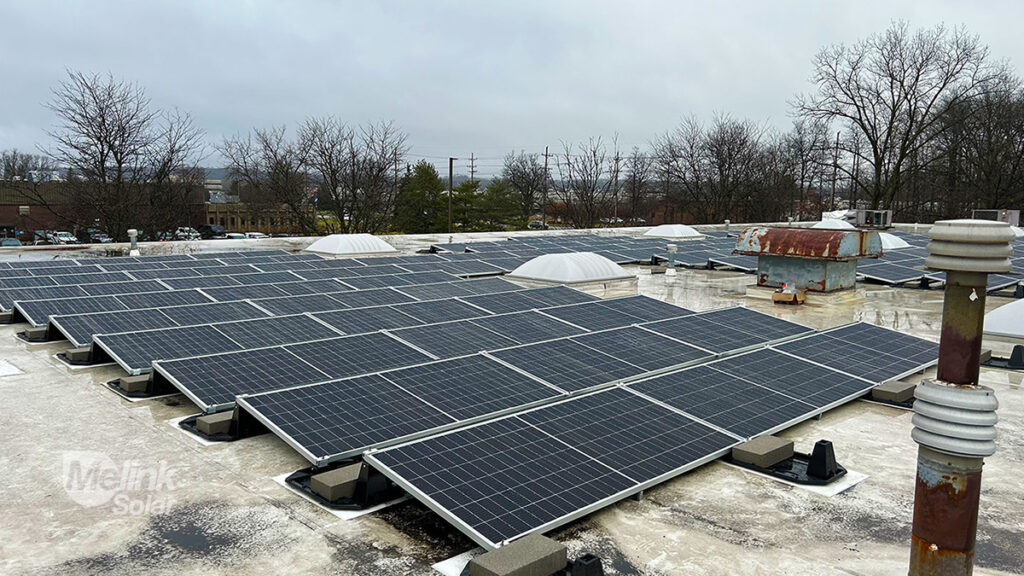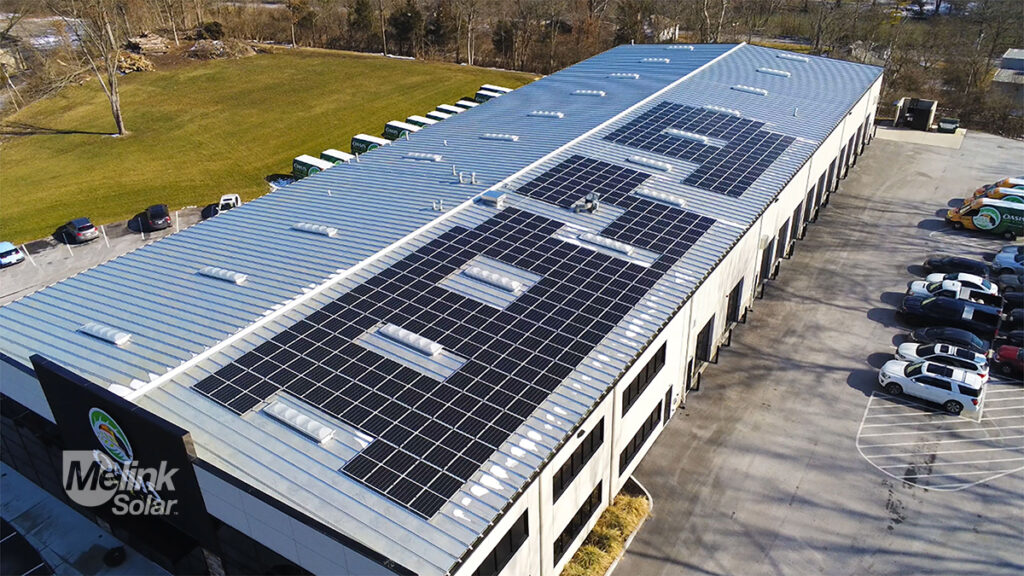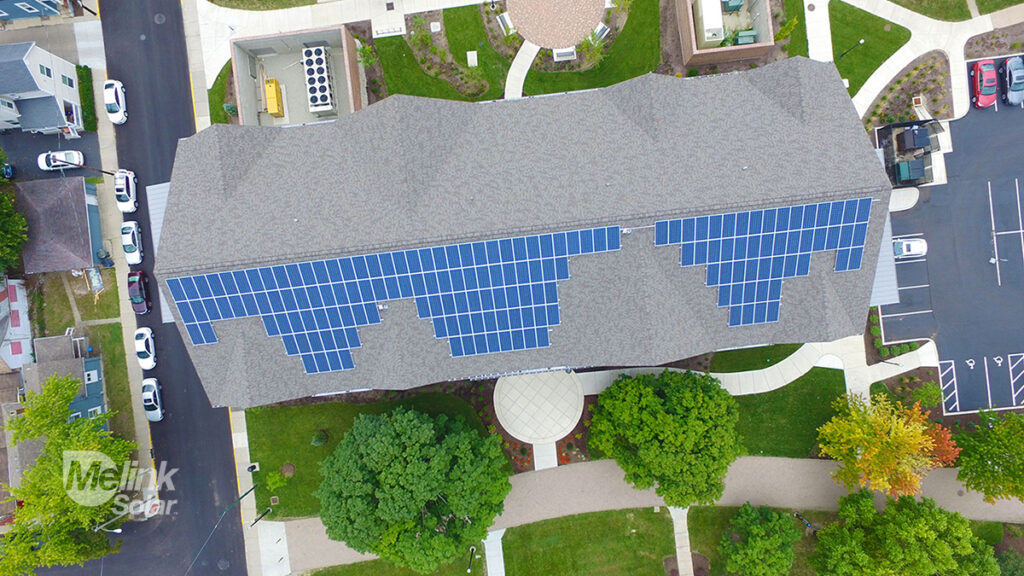How does rooftop solar work, and which mounting method fits your facility?
Rooftops are one of the most practical and cost-effective places to install solar panels on commercial buildings. If your building has unused roof space and a reasonably healthy roof structure, a rooftop system can help offset energy costs without disrupting operations or requiring additional land.
But not all roofs are the same, and neither are solar mounting systems. Choosing the right approach depends on your roof type, age, structural capacity, and site-specific factors like wind exposure and building height.
This section breaks down the three primary types of rooftop mounting systems and what makes each one suitable for different commercial projects.
- Efficient use of space on existing infrastructure
- Typically lower cost per watt compared to ground or canopy systems
- Lower visual impact for discreet sustainability upgrades
- Fewer permitting hurdles in most jurisdictions
- Roof provides easy access for wiring into the building’s electrical system
Rooftop Mounting Types
Mount Type: Ballasted Roof Mounts #

Used for flat or low-slope roofs, ballasted systems rely on weight (ballast blocks), not roof penetrations, to secure the panels in place.
- Concrete blocks are placed on top of the racking to resist wind uplift
- Requires no mechanical attachments to the roof membrane (except for electrical conduit penetrations)
- Ideal for buildings with EPDM, TPO, or built-up flat roofs
- Load-bearing capacity of the roof must be verified by an engineer
- Simplifies waterproofing concerns and lowers install time
Panels are typically installed at a 10°–15° tilt to maximize year-round energy capture while minimizing wind load.
Mount Type: Standing Seam Roof Mounts #

For metal roofs with raised seams, special clamps are used to attach racking directly to the seams, eliminating the need for any penetrations through the roofing surface.
- Compatible with standing seam metal roof types (common in warehouses and industrial buildings)
- Clamps attach mechanically to seams using set screws – no drilling
- Panels can be flush-mounted or tilted with additional brackets
- Lightweight and easy to install with minimal impact on roofing warranty
This method is one of the most maintenance-friendly and durable rooftop options available.
Mount Type: Shingle Roof Mounts #

For pitched roofs with shingles (common in residential or small commercial buildings), mounts must be mechanically attached to the roof structure with proper flashing.
- Roof penetrations are required and must be sealed to prevent leaks
- Special mounting brackets and flashing hardware ensure weather-tight seal
- Typically installed flush with the roof slope for aesthetics and simplicity
- More common in small-scale commercial and residential buildings
Shingle mounts are proven and reliable – but involve more manual installation labor and roof penetrations.
Comparison: Rooftop Mounting Systems
| Feature | Ballasted | Standing Seam | Shingle Mount |
| Roof Type | Flat / low-slope | Metal (raised seam) | Pitched shingle roofs |
| Penetrations | None (except conduit) | None | Yes (with flashing) |
| Typical Tilt Angle | 10–15° | Flush or tilt-mounted | Flush to roof slope |
| Structural Load | Requires ballast weight (~4–6 lbs/ft²) | Minimal | Minimal |
| Aesthetic Visibility | Low (not visible from ground) | Moderate (tilted or flush) | Visible (flush-mounted) |
| Ideal For | Warehouses, big-box retail, distribution centers | Manufacturing or metal-roofed facilities | Small commercial, offices, or converted homes |
Rooftop Design Considerations
Before selecting a mounting system, Melink Solar performs a thorough rooftop assessment, considering:
- Roof age – Systems last 25–30 years, so the roof should be in good shape
- Structural integrity – Especially for ballasted systems, weight limits must be checked
- Setbacks and fire code access – Adequate space must be left around edges and rooftop equipment
- Shading – HVAC units, parapet walls, or nearby trees can reduce solar output
- Access for maintenance – Proper spacing and clear pathways are part of system layout
Not sure if your roof is solar-ready?
Melink Solar offers complimentary rooftop assessments and design feasibility analysis.
Want to compare rooftops with other system types?
Continue to Section 3.1.5: Ground Mount Systems or Section 3.1.6: Parking Canopies to evaluate alternatives.
Interested in how system performance is tracked using monitoring meters?
Explore Section 5: How Do I Track, Maintain, and Maximize My Solar System’s Performance?
